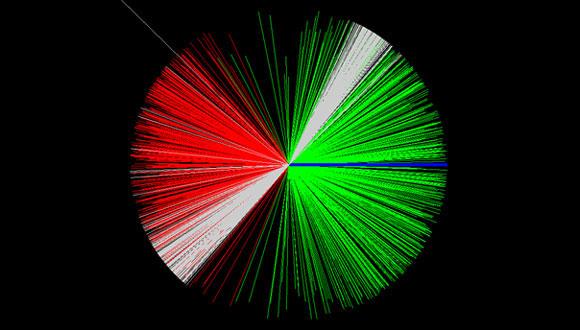Joint Seminar in Nuclear Physics
Zoom: https://huji.zoom.us/j/86169744839?pwd=Qi9yd1ZoMHpSditmYkNTYWFaa1QvZz09
PROGRAM:
14:30 - 14:45 - Refreshments
14:45 - 15:45 - "Towards studies of Short-Range Correlations in radioactive nuclei: Measurements in inverse kinematics", Julian Kahlbow, TAU
Abstract:
Understanding the structure of strongly-interacting quantum mechanical systems such as atomic nuclei is a formidable challenge in physics. We recently demonstrated the feasibility to access nucleon-nucleon Short-Range Correlations (SRCs) in nuclei using hadronic probes in inverse kinematics. The experiment was carried out at the JINR (Russia). A 12C beam at 48 GeV/c impinged on a liquid hydrogen target and the reaction products were measured kinematically complete. I will show that by measuring the fragment in the 12C(p,2p)11B reaction limitations posed by final-state interactions are overcome and thus the reaction probes single nucleon properties in a distinct single-step knockout reaction. The extracted nuclear ground-state distributions are in agreement with theoretical calculations. Having shown that, we probe SRCs in the same way by the break-up of an SRC nucleon pair in 12C(p,2pN)10B/10Be reactions. This experimental technique opens the pathway for SRC studies in short-lived nuclei at upcoming accelerator facilities like FAIR (Germany). Further, I will discuss our future experimental program to study SRCs at GSI/FAIR and JINR to address interactions in cold dense nuclear matter like neutron stars.
15:45 - 16:15 - Coffee break
16:15 - 17:15 - "The HUNTER experiment", Jeff Martoff, Temple University, USA - Virtual Only!!!
Abstract:
The HUNTER experiment (Heavy Unseen Neutrinos from Total Energy-momentum Reconstruction) is a search for sterile neutrinos with masses in the 20-300 keV range. The experiment uses a combination of AMO, nuclear and particle physics techniques to do kinematically complete missing mass reconstruction of neutrinos from 131-Cs electron capture decays. A magneto-optically trap (MOT) of 131-Cs atoms provides a pure sample of ~ 108 radioactive atoms suspended in EUHV with no inert material present.
Electrostatic spectrometers (“Reaction Ion Microscopes”) developed for study of chemical reaction kinematics allow the recoil 131-Xe ions and Auger electrons to be detected with very high resolution and respectively 4pi (2pi) solid angle acceptance. Large arrays of fast scintillators read out by silicon photomultiplier arrays detect the atomic x-rays. The system has sufficient overall resolution to reconstruct and sensitively detect neutrino missing mass in the above range. The experiment requires EUHV pressure, high precision and stability of the MOT and spectrometer fields, and precision in-situ alignment.
Construction of HUNTER is well underway with some innovative solutions to these requirements.


